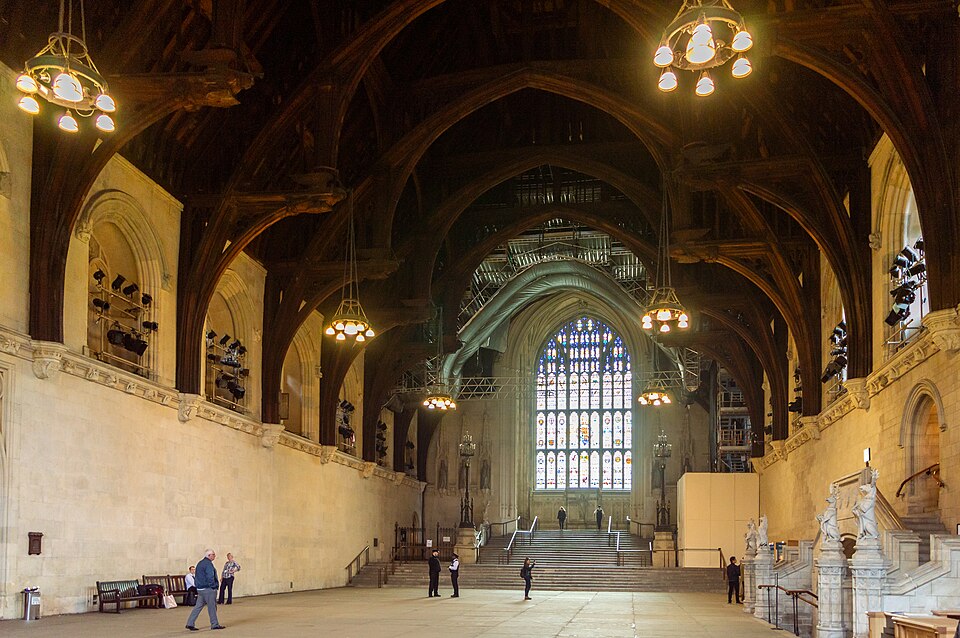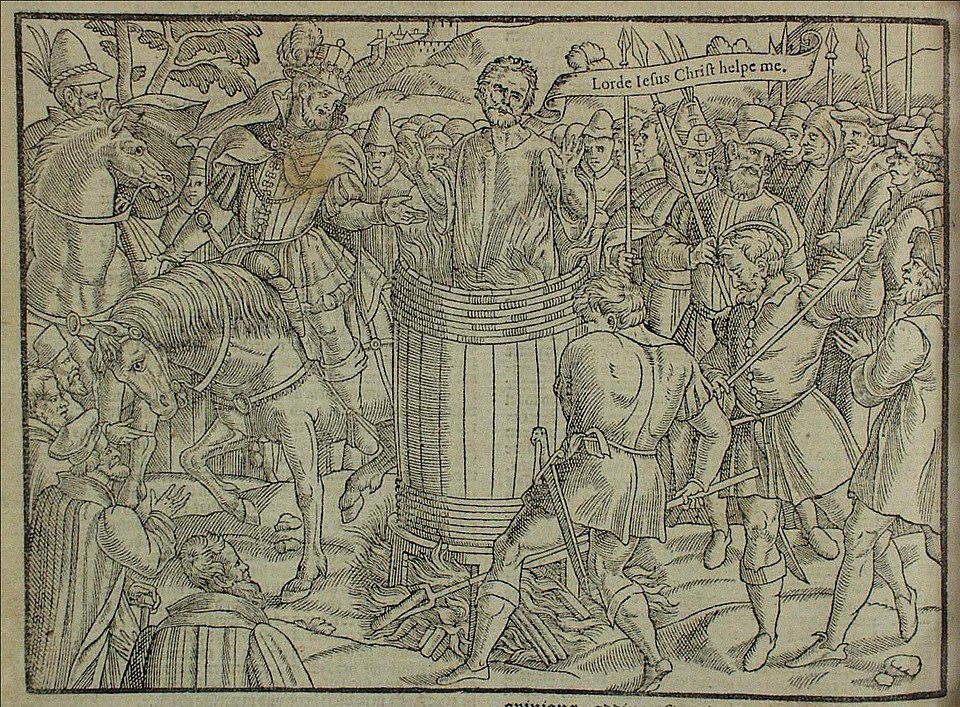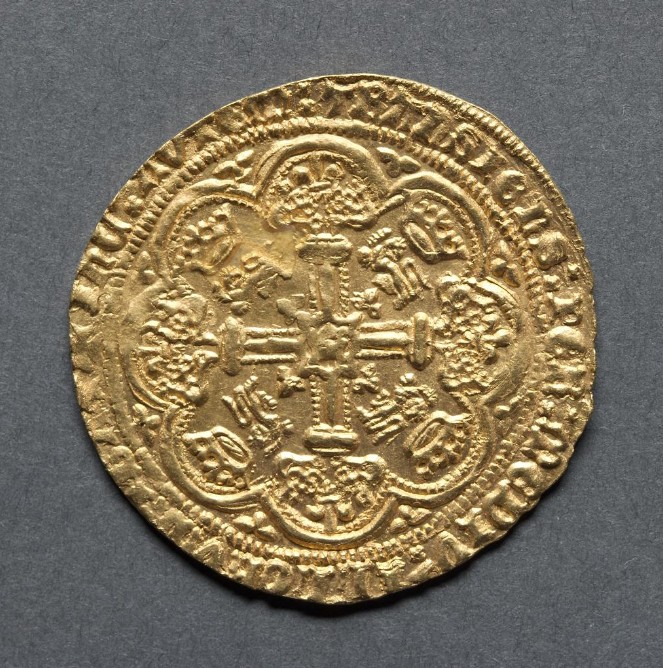OCR Specification focus:
‘The restoration of order and royal authority; the parliament of 1413’
Henry V’s accession in 1413 required immediate consolidation. His actions aimed to restore stability, strengthen legitimacy, and address both domestic unrest and governance challenges.
The Challenge of Authority in 1413
When Henry V came to the throne in March 1413, England was a realm plagued by instability. His father, Henry IV, had faced repeated rebellions, financial crises, and declining health. The legitimacy of the Lancastrian dynasty, established by Henry Bolingbroke’s usurpation of Richard II in 1399, remained questioned by some. As a young king, Henry needed to restore authority and public confidence in royal government.
Defining Royal Authority
Royal Authority: The political and symbolic power of the king to govern, command obedience, and ensure order across the realm.
Henry V’s early policies were designed to demonstrate strength, unity, and the ability to govern effectively.
Restoring Order
Reconciliation with Nobility
Henry pursued a strategy of conciliation towards noble factions previously alienated under his father. He reversed some of his father’s harsher measures, pardoning political opponents and restoring confiscated lands. This aimed to heal divisions between the Lancastrian monarchy and those who still harboured loyalty to the deposed Richard II.
Restoration of estates: Nobles who had lost lands under Henry IV were compensated, reducing grievances.
Rehabilitation of former opponents: Families previously hostile to the Lancastrians, such as descendants of Richard II’s supporters, were cautiously welcomed back.
Law and Order
Henry also emphasised the importance of justice. He strengthened the enforcement of law in localities, ensuring that disorder, rebellion, and corruption were dealt with swiftly. This gave credibility to his reign and reassured the political nation.
The 1413 Parliament
The Parliament of 1413, the first of Henry’s reign, was crucial in consolidating his authority.

Interior of Westminster Hall in the Palace of Westminster, the principal ceremonial and judicial space of the medieval parliamentary complex. Its vast timber roof conveys the scale and authority of royal government. The contemporary photograph includes modern restoration works not required by the syllabus. Source
Meeting in May, it represented an opportunity to affirm legitimacy, secure cooperation, and outline new policies.
Reaffirmation of the Lancastrian Claim
Henry V used the Parliament to project continuity with his father’s reign while also distinguishing his kingship. By allowing open discussion, encouraging cooperation with the Commons, and upholding traditional rights, he positioned himself as a monarch respectful of the political community.
Anti-Corruption Measures
One of the first acts of the 1413 Parliament was to address corruption and abuses of office that had flourished under Henry IV’s weak later years. Royal officers were reminded of their duties, and Henry sought to ensure efficient governance.
Corrupt sheriffs and justices were replaced.
Parliamentary petitions were taken seriously, demonstrating Henry’s willingness to listen.
Financial Issues
The kingdom faced financial strain due to years of rebellion and war. Parliament granted Henry subsidies to restore stability, but confidence in his leadership made them more willing to approve funding than under his father. His careful management of relations with Parliament established a precedent of cooperation.
Religious Policy in 1413
Lollardy and Dissent
The 1413 Parliament also confronted the rise of Lollardy, a religious reform movement inspired by the teachings of John Wycliffe.

Sixteenth-century woodcut of the Lollard John Badby’s execution in 1410 (earlier than 1413 but illustrative of contemporary heresy punishment). It clarifies what statutory anti-heresy measures sought to enforce. Extra narrative detail (the specific case and 1563 source) is beyond the syllabus but aids visual understanding. Source
DEFINITION
Lollardy: A late medieval religious movement in England calling for reform of the Church, challenging clerical authority, and advocating access to scripture in English.
Henry V took a firm stance against dissent. The Parliament supported the prosecution of Lollards, emphasising unity between the monarchy and the Church. This alliance strengthened Henry’s legitimacy as a divinely appointed ruler.
The Statute of Heresy
Reinforcing earlier laws, Henry ensured that heresy would be harshly punished. The burning of heretics was endorsed, setting the tone for religious orthodoxy in his reign.
Symbols of Unity and Royal Image
The Cult of St George
Henry deliberately promoted symbols of national unity, such as St George as a patron saint. This tied his monarchy to religious devotion and patriotic identity.
Coronation and Chivalric Ideals
His coronation in April 1413 had already been marked by pageantry emphasising chivalry, piety, and the divine nature of kingship.

Reverse of a Henry V gold noble (1413–1422), showing an ornamental cross with fleur-de-lis terminals. Royal coinage broadcast legitimacy, stability and the sacred dimension of kingship throughout the realm. Museum catalogue and image are open-access. Source
By the time Parliament met, Henry was presenting himself not just as a political ruler but as a moral and spiritual leader.
Impact of the 1413 Parliament
The outcomes of Henry’s first Parliament were significant for restoring stability:
The monarchy’s legitimacy was reaffirmed.
Relations with Parliament improved, creating trust and willingness to grant taxes.
Noble factions were reconciled, easing political divisions.
A firm stance against heresy reinforced unity between crown and church.
Anti-corruption efforts restored confidence in government.
Henry’s authority was thus successfully strengthened, setting the stage for his ambitious foreign policy, especially the renewal of the French war two years later.
FAQ
Westminster was the traditional seat of royal and parliamentary authority, closely associated with legitimacy and continuity. Holding the Parliament there emphasised stability after years of unrest.
The proximity to Westminster Abbey, where kings were crowned, reinforced Henry’s divine right to rule. It also underlined the symbolism of unity between monarchy, Church, and government.
Henry IV often clashed with Parliament, particularly over finances and accusations of mismanagement. This bred mistrust.
In contrast, Henry V encouraged open debate, showed respect for parliamentary privilege, and acted on petitions. His cooperative tone reassured MPs and created a more constructive relationship, leading to smoother approval of subsidies.
The Commons presented petitions highlighting corruption, inefficiency, and misuse of office.
Henry’s positive response demonstrated a new style of engagement.
By addressing their concerns, he showed he valued parliamentary input.
This bolstered trust and gave him a stronger financial and political base early in his reign.
Targeting Lollardy allowed Henry to display both piety and strength.
The policy reassured the Church, which was a powerful ally, while also discouraging wider dissent that might destabilise his rule. Presenting himself as a defender of orthodoxy strengthened his reputation as a king chosen by God, legitimising his contested dynasty.
Henry’s coronation pageantry, fresh in memory when Parliament met, emphasised chivalry, religious devotion, and kingship sanctioned by God.
The deliberate use of ritual, dress, and heraldry created an image of order and continuity. This helped Parliament perceive him as not only a ruler but also a moral and spiritual leader, reinforcing the political decisions made during the session.
Practice Questions
Question 1 (2 marks)
In which year did Henry V hold his first Parliament, and what was its main purpose?
Mark scheme:
1 mark for correct year: 1413.
1 mark for main purpose: to restore authority/legitimacy, consolidate royal power, or to address corruption and gain parliamentary cooperation (any one).
Question 2 (6 marks)
Explain how Henry V used the Parliament of 1413 to strengthen his authority.
Mark scheme:
Up to 2 marks for reference to anti-corruption measures (e.g. dismissal of corrupt officials, responsiveness to petitions).
Up to 2 marks for reference to religious policy (e.g. suppression of Lollardy, reinforcement of heresy laws, alliance with the Church).
Up to 2 marks for reference to restoring relations with nobility and Parliament (e.g. reconciliation with noble factions, securing subsidies, showing respect for parliamentary traditions).
Full marks require coverage of at least two areas of authority (political, financial, or religious).

